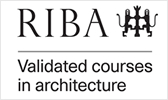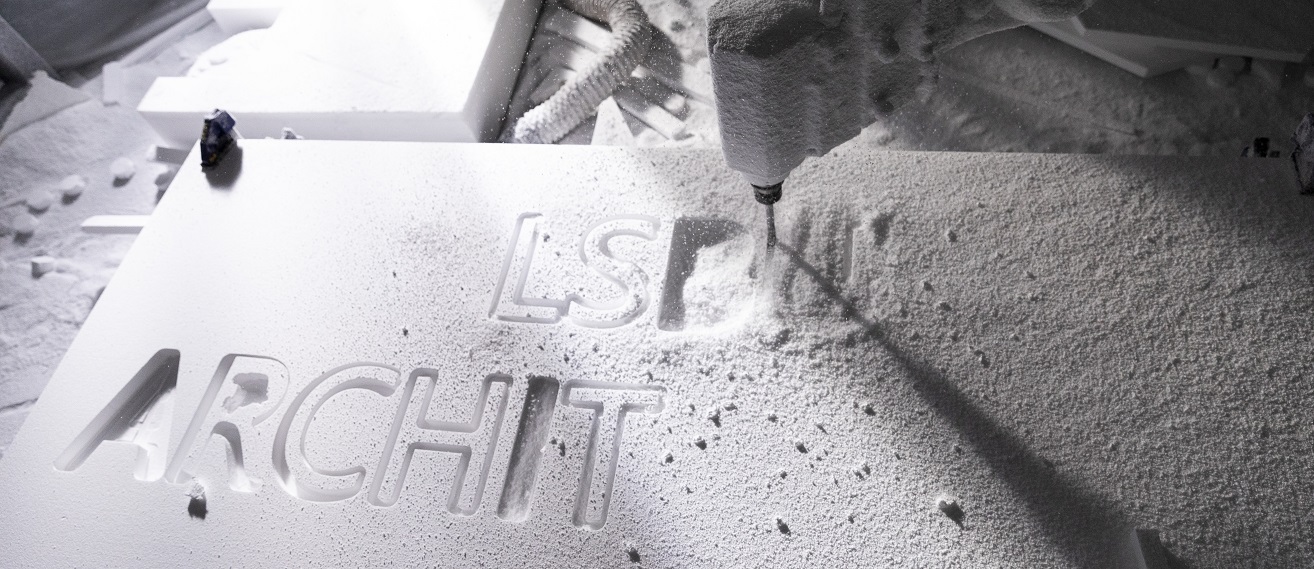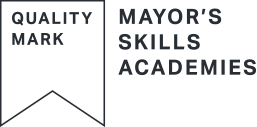Overview
Building a great future
Our undergraduate and postgraduate apprenticeship programme is intended to provide the three stages of education and training, which when successfully completed, will satisfy the Architects Registration Board requirements for registration as an architect in the UK.
We'll teach you to consider structural integrity, the character and location of a site, methods of construction, value for money, design quality, impact on the environment, as well as the legal responsibilities for life safety and statutory consents. Full completion of the apprenticeship qualifies you as a Master of Architecture (MArch) and provides you with Postgraduate Diploma in Professional Practice and the professional award of RIBA Part II & III.
The architects are educated, trained, and registered professionals who plan, design, and review the construction of buildings for a client. They use their skills and knowledge to offer creative problem solving and strategic advice related to various types of building, arts, and construction projects. This includes developing building designs taking into account a range of complex issues such as structural integrity, the character and location of a site, methods of construction, value for money, design quality, impact on the environment, as well as the legal responsibilities for life safety and statutory consents.
Architects work responsibly to deliver the interests of their clients and the core requirements of cost, time, and quality for the end user.
Duration
This course is 3 years, plus 1 term part time. Apprentices usually attend university one day per week for the 15 week first semester, and one day per week for the 15 week second semester. The day in at LSBU will be communicated well in advance to enable apprentices to plan their working week in practice, and does not vary from week to week.
The full apprenticeship standard and assessment plan can be found on the Institute for Apprenticeships.
Apprenticeship Employment Guidelines
Apprenticeship Evidence Pack Guidance
NB: applicants to this course should be advised that:
- the University is in the process of seeking prescription for the level 7 apprenticeship qualifications; this will sit within the apprenticeship framework from the ARB
- prescription of this course and qualifications is based on a series of standard requirements being met and maintained
- prescription of courses and qualifications by the ARB is subject to periodic review
- the title ‘Architect’ is legally protected for those who are on the UK register of architects
Why Architecture at LSBU?
- star-o
- No.1 London modern university for research intensity in Architecture (Complete University Guide 2019).
- check-circle
- Professional accreditation – the course is fully validated by the Royal Institute of British Architects.
- bullseye
- Experience - with roots in London Council School of Building (1904) and Brixton School of Building (1940), LSBU has been offering architectural education for over 100 years.
- graduation-cap
- No.2 for satisfaction with teaching in London (Guardian League Tables 2020).
| ModeApprenticeship | DurationUp to 36 Months Practical Period & 12 Months EPA (48 months) | Start dateSeptember | Application code6018 | Application method Direct to LSBU |
Watch our video to see how you can make yourself at home studying at LSBU.
Location
London South Bank University student union is located at 103 Borough Rd, London SE1 0AA.
If you are visiting our Southwark Campus, you may wish to use our downloadable campus map (PNG File 466 KB). For information on accessibility, see our DisabledGo access guides. See our location page for more details.
Entry Level Requirements
Need further information? Call us on 0800 923 8888 to discuss entry requirements.
- recognised first degree in architecture, 2.2 or above, or
- level 6 Architectural Assistant apprenticeship certificate, or
- recognised first degree in architecture which is notified to the European Commission plus
- applicants must hold 5 GCSEs A-C including minimum B in Maths and English or equivalent (reformed GCSEs grade 4 or above)
- Architecture Portfolio see guidance here
Non-academic entry criteria, for example requirements set by professional or sponsoring bodies:
- confirmation of employment offer in architect’s practice registered as hosting L7 apprentices
Choose your country
Select country here:
Missing English and Maths qualifications?
If you do not have the required English and Maths qualifications needed to satisfy the entry requirements for this programme, we have courses available at our partner College that you can take to upskill in these areas. Find out more at South Bank College.
The individual Tuition Fee for this course is shown above.
With no statutory funding system for the majority of postgraduate degrees, most students in the UK are self-funding whether you're a Home, EU or International student. One of the exceptions to this is PGDip Architecture, which are treated as undergraduate courses for fees and funding purposes. This means that you can receive access to a student loan via Student Finance England.
The writing up fee:
A student can change to writing up status for the purpose of a lower fee when the examination arrangements have been submitted and approved. Examination arrangements are submitted 3 months prior to submission of the thesis for examination. A student only has one year of writing up at the reduced fee that covers submission, viva, and minor corrections. The writing up fee 25/26 is £1,246
Home and International entry
| Mode Apprenticeship | Duration Up to 36 Months Practical Period & 12 Months EPA (48 months) | Start date September | Application code 6018 | Application method Direct to LSBU |
Full-time postgraduate students apply to the UK Postgraduate and Statistical Service (UKPASS). Full details of how to do this are supplied on our How to apply webpage for postgraduate students.
All part-time students should apply directly to London South Bank University and full details of how to do this are given on our postgraduate How to apply webpage.
Postgraduate applicants are required to provide up to two references as part of their application.
Interview
All students considered for admission will be required to attend an interview with a portfolio of work; if located overseas, applicants will be required to send a portfolio of work to the admissions tutor.
Accommodation
Students should apply for accommodation at London South Bank University (LSBU) as soon as possible, once we have made an offer of a place on one of our academic courses. Read more about applying for accommodation at LSBU.
Finance
It's a good idea to think about how you'll pay university tuition and maintenance costs while you're still applying for a place to study. Remember – you don't need to wait for a confirmed place on a course to start applying for student finance. Read how to pay your fees postgraduate student.
An Apprenticeship Standard is comprised of a programme of study, an End Point Assessment and on-the-job learning. This means that in addition to meeting academic requirements, you’ll need to be employed in a role related to your apprenticeship. The process of applying depends on whether you have an employer to sponsor (and support) you.
If you are employed and your employer has confirmed they will support your apprenticeship:
You are welcome to submit an application via our application system. You’ll need to provide details of your employment/employer as part of the application. You’ll also need to ensure you and your employer meet the requirements – find out who can be an apprentice to see if you meet the entry requirements and employer commitments to find out more about your employer’s role.
If you are not employed:
- You will need to find a job role related to the apprenticeship you wish to apply for, with an employer who is happy to support you. If you would like to find an employer to support your apprenticeship with LSBU, you can search which employers are currently advertising Apprenticeships via the National Apprenticeship Service website searching for ‘London South Bank University’ as keywords.
- If there are no search results, this means there are currently no vacancies. We update our vacancies regularly, so please do check back regularly.
- Many employers advertise their apprenticeship vacancies on their websites or via other portals. You could search for ‘find an apprenticeship’ online.
- When you’re ready to apply, see the government's advice on how to write a winning apprenticeship application and make your application.
Further information for apprentices
If you’re a prospective apprentice, you can find out more about who can be an apprentice on our student pages.
Further information for employers
If you’re an employer, you can find information about the employer commitments and further related information on the related pages for business.
See our admissions policy 1.5 MB and complaints policy 516.0 KB.
Prepare to start
We help our students prepare for university even before the semester starts. To find out when you should apply for your LSBU accommodation or student finance read How to apply tab for this course.
Enrolment and Induction
Enrolment takes place before you start your course. On completing the process, new students formally join the University. Enrolment consists of two stages: online, and your face-to-face enrolment meeting. The online process is an online data gathering exercise that you will complete yourself, then you will be invited to your face-to-face enrolment meeting.
In September, applicants who have accepted an unconditional offer to study at LSBU will be sent details of induction, which is when they are welcomed to the University and their School. Induction helps you get the best out of your university experience, and makes sure you have all the tools to succeed in your studies.
Read more about Enrolment and Induction.
Suggested reading
- Philip Ball: Critical Mass
- Kevin Kelly: Out Of Control
- Manuel de Landa: One Thousand Years of Non-Linear History
- Simon Sadler: The Situationist City
- Michael Sorkin: Local Code
Year 1
Semester 1
- Design 401 (20 credits)
- Design 402: Arts, media and digital design (20 credits)
- History and theory: critical thinking (10 credits)
Semester 2
Year 2
Semester 1
- Architecture and theory: dissertation (20 credits)
- Technology 5 (lectures only) (0 credits)
Semester 2
Year 3
Semester 1
- Design 501 (20 credits)
- Design 502: Arts, media and digital design (20 credits)
Semester 2
- Design 503 (40 credits)
- Technology 5: technical thesis(20 credits)
Autumn term
- EPA professional interview and case study (30 credits)
Introduction to modules studied
- DesignDesign at LSBU is taught in four postgraduate studios. A presentation is made to apprentices at the start of each academic year, outlining the scope and character of the studios offered on the MArch/Diploma programme; apprentices vote for their choice of studios, and those themes reflecting their individual interests in architecture. Within the first month of the course, apprentices may review their studio choice and request a studio change if feasible.
Design studio projects are introduced in small group apprentice-led seminars; these are followed by individual evaluative tutorials. Apprentices make interim presentations of 2- and 3-D analogue and digital material to their studio staff, peer group, and invited critics illustrating the scope and detail of their emerging design proposal. Apprentices also make a final presentation of 2- and 3-D analogue and digital material to the studio staff, peer group, and invited critics illustrating the scope and detail of their developed final design proposal. All design studio work is subject to continuous assessment. Studio tutors monitor design scheme proposals throughout the semester, and collectively moderate assessments at each semester’s end. Individual feedback on scheme proposals is provided at every individual studio tutorial. An evaluative, critical summary of design studio project is provided at all students’ final presentations. Provisional grades are given at the end of semester 1, with all apprentices offered opportunities to review, revise, and add to their design studio submissions. - Technology 5: technical thesis This module is a taught course and two reports, including a design studio project-related submission which integrates the thematic interests and methodologies of the postgraduate design studios, develops the technological focus of the final studio design project, and reflects the requirements for material qualification of the graduation project/s through making. There is an opportunity for students to develop production drawings and medium scale physical constructional elements exploring, in 2- and 3D, creative interpretations of materials, components, and structural systems technologies underpinning advanced architectural design appropriate to the final year of postgraduate study.
By situating architectural design in a material, constructional, and manufacturing environment, students will consider the impact of technical decisions when completing a comprehensive design proposal. It's a chance to further creatively develop students’ structural and constructional understanding, as well as to extend and enhance the technological profile and presence of students’ diploma project (Design 503) through i) a technology report and ii) iterative medium scale physical constructions. They'll understand the means to optimise and convert digitally generated design drawings to production information, and short run component manufacture. The module provides the opportunity to consider design alternatives within the technological parameters influencing progressive architectural design, and expressing these in sequences of 3D elements, constructed in the LSBU workshops. - Energy and resource efficiency in design This is a taught course and project submission integrating thematic interests and methodology of studios with requirements for resource efficient and environmentally conscious architectural design. The module considers: development of students’ understanding of energy conservation, and reduction of environmental impact of building materials and systems; consideration of strategies for resource and energy efficient design relevant to current professional practice; and application of environmental research data to developing design proposals for small to medium sized building undertaken in design studio.
- History and theory: critical thinking This module addresses critical thinking in architecture in terms of the methodology, historical context, strands of theory, key issues in the production of architectural knowledge, and the relevance of architectural discourse. It is divided into two parts: Critical Readings (component 1), and Research Methods (component 2). The module aims to develop intellectual and practical tools that can be used by students in several ways: to inform and support – and to enable students to define – a critical position; to exercise intellectual capacities that may be mobilised in a variety of professional, scholarly, and lay contexts, thereby enhancing employability; to present and debate diverse architectural subjects in relation to issues of cultural, economic, social, political, philosophical or ethical significance; and to inform the design and execution of research.
- Architecture and theory: dissertation This module addresses the research, analysis, interpretation and communication of architecture, in the form of a written dissertation on a topic of the student’s choice concerning the histories and theories of architecture. The module aims to introduce the principles and practice of scholarly research, enabling students to: define and elaborate a critical position; organise and communicate ideas in writing; develop a coherent argument expressed in the form of a connected text; and become familiar with the procedures specific to critical investigation and analysis in architecture.
- Professional practice and design economics This module comprises Professional Practice and Design Economics. The objectives of the module are to develop and question professional practice and practice themes introduced at an earlier stage of study and encountered in practical training experience. Students are introduced to the approaches to comprehensive and critical integration of practice issues with design, design considerations and finance and to a recognition of the enhanced capabilities that this awareness and skill provides. They'll gain knowledge of the professional, legal, and managerial responsibilities of a practising architect, including relationships with other co-professionals. Additionally, they'll garner the ability to develop, test, and evaluate design options and produce architectural designs that meet clients' and building users' requirements, including compliance with budgetary and time constraints, and relevant UK building legislation.
This module will see students recognise the criteria by which clients evaluate investment potential, and the practical consequences of design decisions. It will provide knowledge of project procurement and building contract options, and the methods for making an appropriate selection. The module situates architecture and building in a financial context; examining cost and economic concepts, and considers the impact of design decisions on building costs and project viability Considering project appraisal techniques to evaluate design options
Careers
Employability Service
By completing the apprenticeship route, you’ll have the advantage of having real-world work experience, working in a role related to your area of study. This will give you a competitive edge among other graduates when you complete your apprenticeship standard.
During your studies – and for two years after you graduate – you’ll have access to our Employability Service, who can help you develop your skills through the Careers Gym workshops and presentations. Our JobShop advisers support students and graduates with finding the right job for them.
We are University of the Year for Graduate Employment - The Times and Sunday Times Good University Guide 2018.
Postgraduate apprenticeship as an Architect is a cost and time effective means to the second and third stages of the three stages of professional qualification. The course is for those already working in practice, and leads to the university award of Master of Architecture/Postgraduate Diploma in Professional Practice and the professional award of RIBA part 2&3; apprenticeships in architecture build on the already close relationship between schools of architecture and the professional workplace of the architect.
The MArch Architecture aims to develop apprentices’ understanding – and practical application – of the following issues:
- architects are involved globally in creating a range of buildings and spaces, which not only house people and facilitate their activities but reflect the shared beliefs and values of their societies
- the scope of architecture involves the conception, elaboration, and production of those spaces, buildings, cities, and landscapes forming the built environment
- design as the central focus of the LSBU architecture programme where this is understood primarily as a critical, reflective, and analytical cultural practice. Design has a reciprocal relationship with areas of specialist knowledge including histories and theories of architecture, constructional and environmental technologies, and professional skills
- the value of a creative and focused education, and rigorous programme of study for apprentices from diverse backgrounds already working in practice and who wish to become professionally qualified architects
- the intellectual capacity required to think critically, and the practical skills to develop and communicate design ideas through processes of thinking, making, and designing students engage with the material, social, and environmental issues of the contemporary world, drawing inspiration from that world and the world of imagination
London South Bank University has a long established history of part time professional courses, and enjoys excellent links with all disciplines within the construction industry. Our courses in architecture are fully validated by the Royal Institute of British Architects (RIBA). We have excellent studios, workshops, and AV facilities on site (including advanced digital fabrication equipment), and an architecture team who are committed to every apprentice realising their ambitions.
Learning outcomes are mapped against the requirements of the apprenticeship standard published by the Institute for Apprenticeships, which in turn reflect the 11 points of the EU Directive for Architects used for RIBA validation. In each case, the apprentice will have knowledge and understanding of a key area, and specific skills. There is thus an exceptionally strong professional basis for all aspects of the LSBU Architect apprenticeship.
The course is unconditionally validated by RIBA and offers the professional award of RIBA part 2 on successful completion. The regular validation cycle ensures that your work is carefully sampled by peer reviewers to ensure course content and outputs retain close relevance to professional practice.

- The professional membership body, the Royal Institute of British Architects (RIBA), champions better buildings, communities, and the environment through architecture.
Guest lecturers
Recent guest lecturers include:
- Roz Barr (principal of Roz Barr Architects, and recipient of the 2012 AJ Retrofit Award)
- Professor David Gloster (RIBA Director of Education)
- Michael Pawlyn (project architect for the Eden Project)
- Professor Peter Salter (architect of the acclaimed Walmer Road housing scheme, and professor of architecture at the Welsh School of Architecture)
- Alex de Rijke, founding partner of dRMM, former Dean of the Royal College of Art
- Carolyn Steel (author of The Hungry City)
- Carl Turner (RIBA Manser award winner for the Slip House, Brixton)
- Mike Weinstock (Director of Research at the Architectural Association, and Director of the Emergent Technology Master of Architecture programme)
Teaching and Assessment
Learning on an apprenticeship offers a combination of academic education and practical training; it is learning informed and enriched by professional practice. Apprentices are required to attend a combination of tutorials, workshops, lectures, seminars, and site or building visits (the latter other than those undertaken in the workplace). The course is principally taught by staff in the division of architecture, although in some instances staff from other departments and disciplines are involved. Where possible, tutors and guests from outside the university are also invited to present lectures and provide specialist inputs to a particular subject area or project.
Studio structure
Central to the LSBU concept of postgraduate architecture education is the studio system, operating across part and full-time courses. The studios provide a framework for a range of relevant intellectual and practical specialisms to inform design work.
View the School of the Built Environment and Architecture Catalogue 2018/19.




